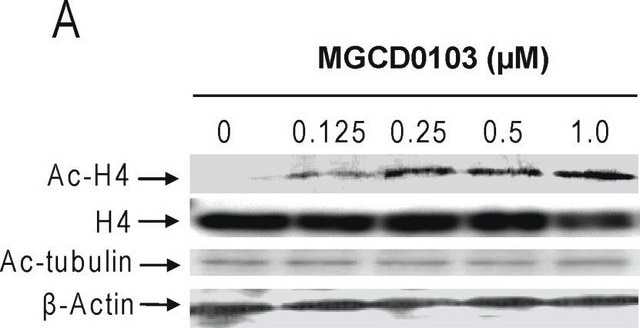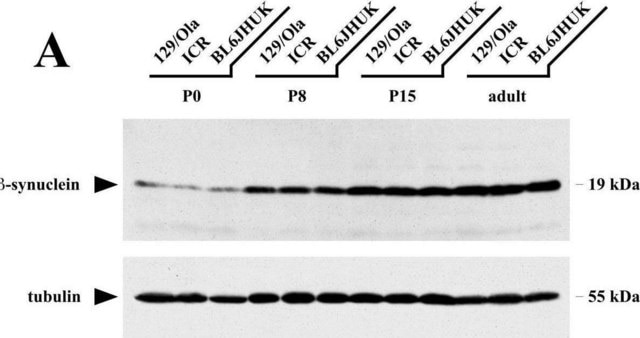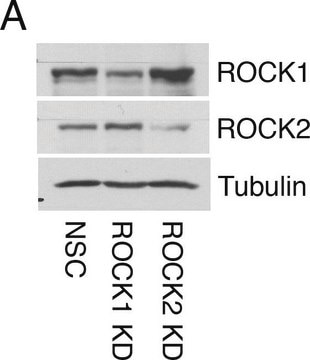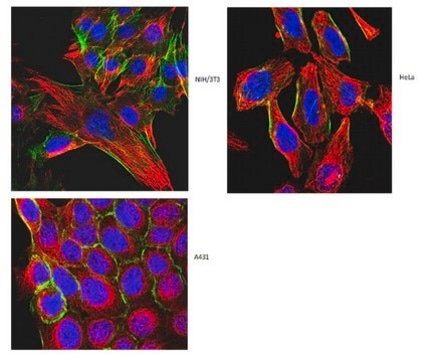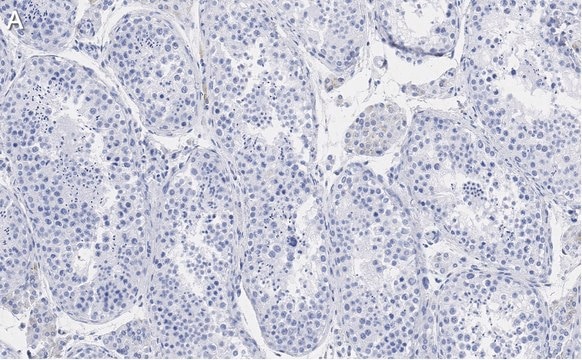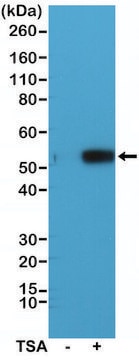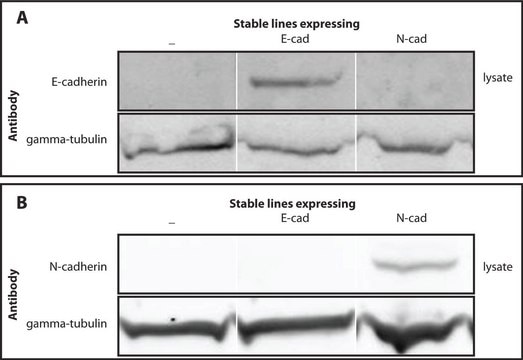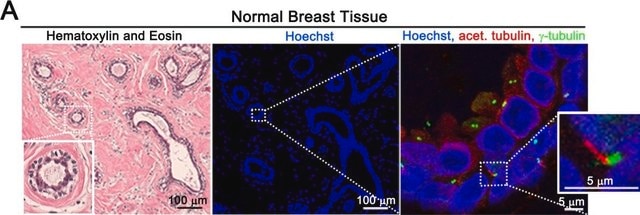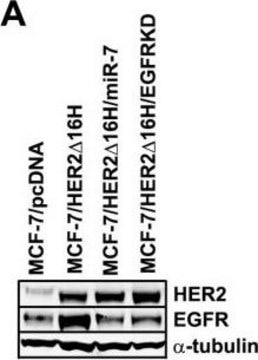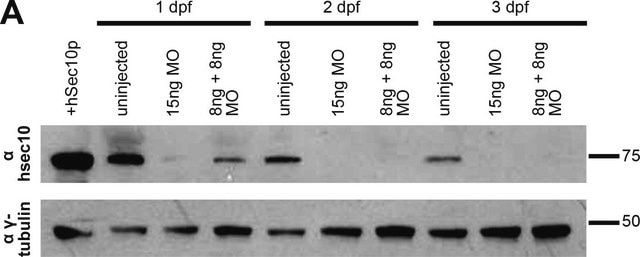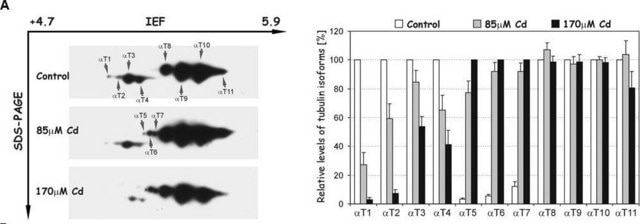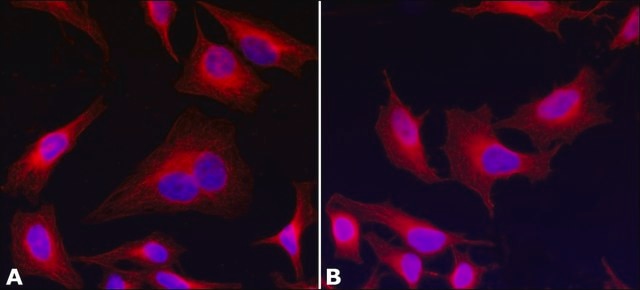MABT868
Anti-acetyl-alpha tubulin Antibody, clone 6-11B-1
clone 6-11B-1, from mouse
Synonym(s):
Tubulin alpha-1 chain, acetyl-alpha tubulin
About This Item
Recommended Products
biological source
mouse
Quality Level
antibody form
purified immunoglobulin
antibody product type
primary antibodies
clone
6-11B-1, monoclonal
species reactivity
sea urchin, bovine, monkey, Chlamydomonas, Drosophila, mouse, rat-kangaroo, human
technique(s)
dot blot: suitable
electron microscopy: suitable
immunocytochemistry: suitable
western blot: suitable
isotype
IgG2bκ
GenBank accession no.
UniProt accession no.
shipped in
wet ice
target post-translational modification
acetylation (Lys40)
Gene Information
human ... TUBA1A(7846)
General description
Specificity
Immunogen
Application
Cell Structure
Adhesion (CAMs)
Immunocytochemistry Analysis: A representative lot detected acetylated alpha-tubulin in cultured normal human kidney epithelial cells (Courtesy of Dr Christopher Ward, University of Kansas Medical Center).
Western Blotting Analysis: A representative lot detected alpha-tubulin in sea urchin sperm axoneme lysates, but not in lysates from taxol-stabilized microtubules from sea urchin eggs (Piperno, G., and Fuller, M. (1985). J Cell Biol.101(6):2085-2094).
Dot Blot Analysis: A representative lot detected alpha-tubulin in both the ionic detergent Sarkosyl-soluble and insoluble fractions from sea urchin spern axoneme extracts (Piperno, G., and Fuller, M. (1985). J Cell Biol.101(6):2085-2094).
Immunocytochemistry Analysis: A representative lot detected acetylated and deacetylated, but not unacetylated alpha-tubulin in COS-7 green monkey kidney fibroblasts and Ptk2 rat kangaroo kidney epithelial cells by fluorescent immunocytochemistry (Soppina V., et al. (2012). PLoS One. 7(10):e48204).
Electron Microscopy Analysis: The Fab fragment of clone 6-11B-1 has been shown to stain Taxol-stabilized microtubules polymerized in vitro from purified bovine brain tubulin with or without SIRT2-catalyzed deacetylation (Soppina V., et al. (2012). PLoS One. 7(10):e48204).
Quality
Western Blotting Analysis: 4.0 µg/mL of this antibody detected acetyl-alpha tubulin in 10 µg of HeLa cell lysate.
Target description
Physical form
Storage and Stability
Other Notes
Legal Information
Disclaimer
Still not finding the right product?
Give our Product Selector Tool a try.
Storage Class
12 - Non Combustible Liquids
wgk_germany
WGK 1
flash_point_f
Not applicable
flash_point_c
Not applicable
Certificates of Analysis (COA)
Search for Certificates of Analysis (COA) by entering the products Lot/Batch Number. Lot and Batch Numbers can be found on a product’s label following the words ‘Lot’ or ‘Batch’.
Already Own This Product?
Find documentation for the products that you have recently purchased in the Document Library.
Customers Also Viewed
Our team of scientists has experience in all areas of research including Life Science, Material Science, Chemical Synthesis, Chromatography, Analytical and many others.
Contact Technical Service